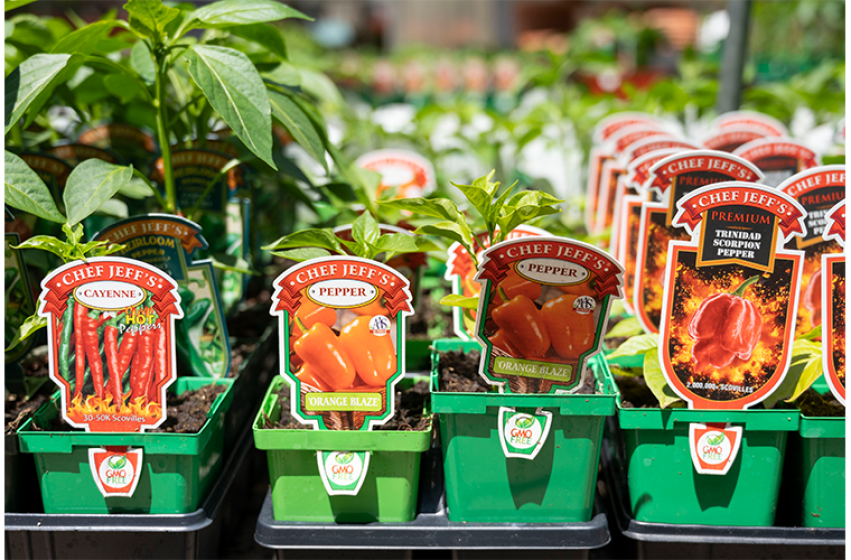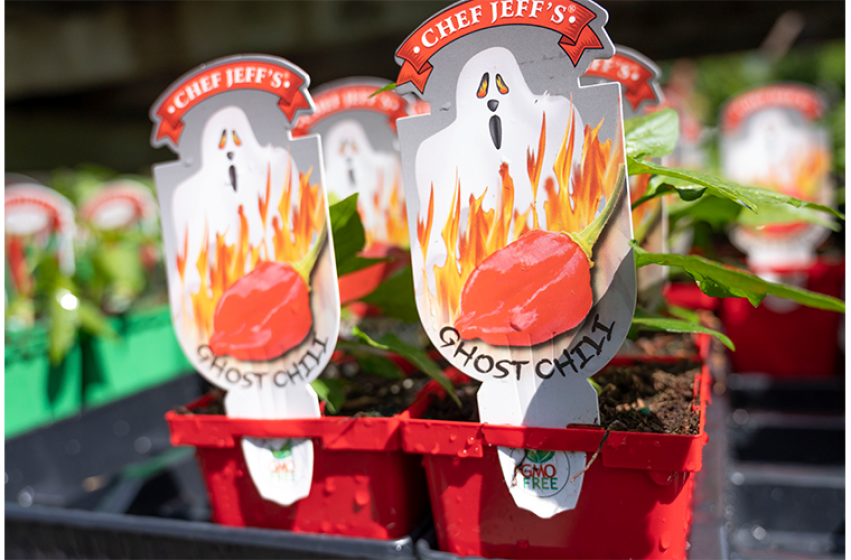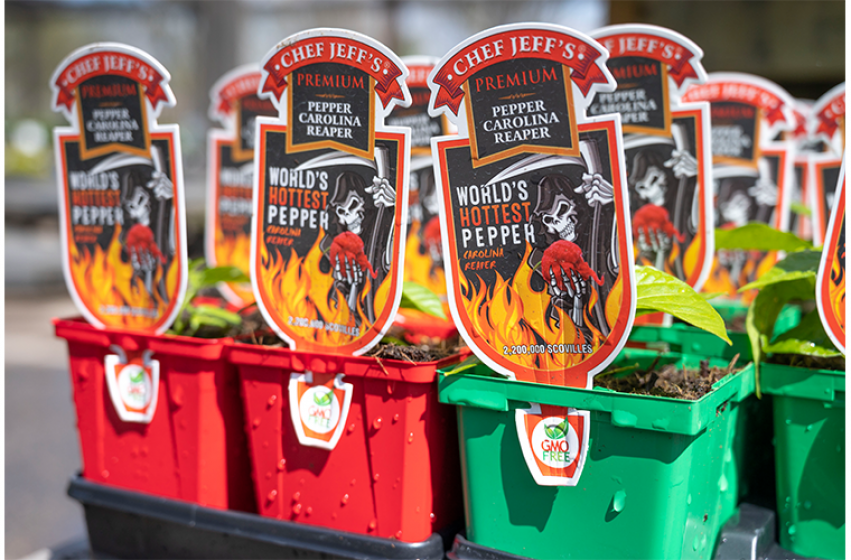Whether you prefer the cool crunch of a sweet bell pepper or the feisty fire of a chili pepper, nothing beats the flavor of a freshly picked pepper. Their rich green leaves, compact form, and brightly colored fruit make them a contender for most any garden space. Nowadays, there are – literally – hundreds of varieties to choose from and deciding what to grow is half the fun!
Peppers comes in a variety of flavors, from sweet to mild to blistering hot. And when it comes to peppers, there’s one thing most pepper enthusiasts can agree on – the Scoville Scale for peppers.
What is the Scoville Scale?
Invented by American Pharmacist Wilbur Scoville in 1912, the Scoville Scale measures the capsaicin concentration in units (the chemical compound that causes spicy heat). Simply put, it is a way to tell how hot a pepper is going to be. The higher the number, the hotter the pepper. The original Scoville test involved feeding peppers to volunteers, but thanks to modern-day science, we no longer need people to volunteer to taste hot peppers. Today, in order to obtain more accurate results, scientists use a technique called High-Performance Liquid Chromatography (HPLC) to determine the exact concentration of capsaicin in a pepper. The Scoville Scale remains the most widely used and respected when it comes to measuring the heat of a pepper.
Here are a few of our favorite from hot to not pepper selections (Scoville units are indicated in parenthesis for each of the peppers below):
SWEET TO MILD VARIETIES Bell (0 unites) - Green pepper that ripens to yellow or red with a grassy flavor and super-crunchy texture. Can be eaten either raw or cooked. Often dried and powdered (paprika) and is popular for stuffing with ground meat or quinoa and veggies.
Banana (100-500 units) - Long, curved-shape yellow pepper that is mild and tangy in flavor. Perfect for pickling and tasty in salads and on sandwiches.
Poblano (1,000–1,500 units) – Ripen from dark green to rust red. Used to make chile rellenos and is often dried and ground into chile powder. Nice in salsas or when you want some heat but not too much.
HOT VARIETIES
Jalapeno (2,500-8,000 units) – Medium-sized chile pepper with a mild to moderate amount of heat. Used to flavor everything from salsas to chili to salad dressings.
Serrano (10,000-23,000 units) - Hot, pungent, candle-shaped fruits that mature from green to bright red. Good for pickling or in salsas. The pepper of choice for making Pico de Gallo.
Cayenne (50,000-100,000 units) – 6 to 7-inch long fruit, slightly hotter than jalapenos. Excellent steeped in oil or vinegar for flavorful condiments. Enjoy fresh, canned, or pickled.
Thai Chilies (50,000-100,000) - are an essential ingredient to many tasty Thai and Asian dishes. Used to complement curries, stir-fries, sauces, soups, and salads.
Habaneros (100,000-350,000) - Small orange peppers that may also come in red, yellow, brown, and green variants. Used in salsas, sauces, and any dish requiring some heat.
EXTREMELY HOT VARIETIES
Caribbean Hot Red (300,000-445,000 units) - Produces 1 ¾-inch long by 2-inch wide wrinkled, hot peppers that ripen from lime green to a brilliant red. Same distinctive taste as habanero but hotter. Excellent for use in salsas, marinades, and hot sauces.
Ghost Pepper (855,000-1,041,427 units) - Ripe peppers measure 2.5 to 3.3-inches long with a red, yellow, orange, white, purple, or chocolate color. Intense sweet chili flavor (heat does not kick in for 30 – 45 seconds). Used in hot sauces or dehydrated and ground into powders or chili flakes.
Trinidad Scorpion (1,200,000–2,000,000 units) - Wrinkled, lantern-shaped fruit ripens to a searing red orange. Take caution even when touching the leaves. Wear gloves while handling and chopping.
Carolina Reaper (1,400,000–2,200,000 units) - Has been called the hottest pepper in the world to date. 2 to 3-inch bright red pepper with a unique stinger tail that is unlike any other pepper. Insanely hot with an underlying sweet flavor with a hint of cinnamon and chocolate undertones.
Can you take the heat? There are many benefits to eating hot peppers. Capsaicin seems to have a positive effect on blood cholesterol and is an ingredient used to treat conditions from arthritis to psoriasis. Some scientists speculate that the brain releases endorphins in response to the discomfort produced by the chile pepper’s burn- often referred to as a “hot pepper high”.




